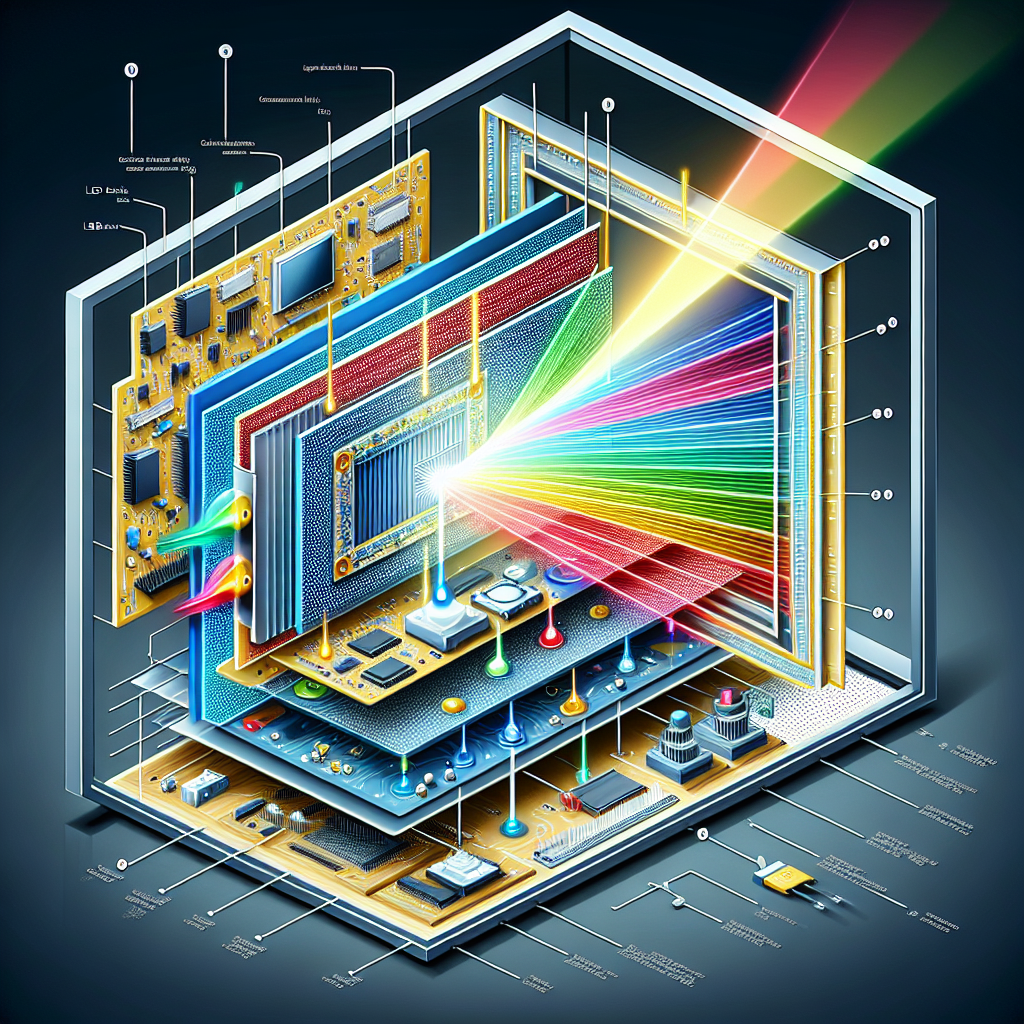
How do LED monitors work?
LED monitors have become the standard display technology for various devices, including computers, televisions, and smartphones. These monitors provide high-quality visuals, improved energy efficiency, and a slim form factor. But how exactly do LED monitors work? In this comprehensive guide, we’ll delve into the technology behind LED monitors, their benefits, and how they compare to other display technologies.
| Aspect | LED Monitor | LCD Monitor | OLED Monitor |
|---|---|---|---|
| Backlighting | LEDs | CCFL | Self-lighting |
| Energy Efficiency | High | Moderate | High |
| Color Accuracy | Good | Moderate | Excellent |
| Contrast Ratio | High | Moderate | Very High |
| Thinness | Very Thin | Thick | Ultra-Thin |
Understanding LED Technology
LED stands for Light Emitting Diode. LED monitors use these diodes as the primary source of light behind the screen. The screen in an LED monitor comprises several layers, including the LED backlight, a liquid crystal display (LCD) panel, and various filters and coatings to enhance image quality.
Components of an LED Monitor
- LED Backlight: This is the light source that illuminates the entire screen. LEDs are distributed evenly across the back of the monitor or arranged around its edges.
- LCD Panel: This layer contains liquid crystals that modulate light to create images, colors, and shapes. Each pixel is controlled individually to produce a high-resolution display.
- Color Filters: These are used to generate the full spectrum of colors by filtering the white light from the LED backlights.
- Polarizing Layers: These layers help control the orientation of light waves, improving the quality and readability of the display.
- Reflective Coatings: These materials reduce glare and improve contrast, making the screen easier to view in various lighting conditions.
How LED Backlighting Works
LED backlighting is the key to the enhanced performance of LED monitors. There are primarily two types of LED backlighting used in monitors:
Edge-Lit LED Backlighting
In edge-lit LED monitors, the LEDs are placed around the edges of the screen. The light is then diffused across the entire display using a light guide plate. This type of backlighting allows for incredibly thin monitors but may have some issues with uneven lighting and reduced contrast.
Full-Array LED Backlighting
Full-array LED monitors have LEDs distributed evenly behind the entire screen. This type of backlighting provides uniform brightness and better control over contrast and color accuracy. Some high-end full-array LED monitors feature local dimming, which allows specific areas of the screen to dim independently for improved contrast and black level performance.
Benefits of LED Monitors
LED monitors offer several advantages over older display technologies, making them a popular choice for consumers and professionals alike. Here are some key benefits:
- Energy Efficiency: LED monitors consume less power compared to traditional CCFL-backlit LCD monitors, making them more environmentally friendly and cost-effective over time.
- Superior Image Quality: LED monitors offer better color accuracy, contrast ratios, and brightness levels, resulting in a more vivid and lifelike display.
- Longer Lifespan: LEDs have a longer operational lifespan compared to CCFL bulbs, reducing the need for frequent replacements and associated costs.
- Slim Design: The compact and efficient nature of LEDs allows for thinner and more stylish monitor designs.
- Environmental Impact: LEDs are free of hazardous materials like mercury, making them a safer and more sustainable choice for the environment.
Comparison with Other Display Technologies
While LED monitors have become a dominant force in the market, it’s essential to understand how they compare to other display technologies like LCD and OLED. Here’s a quick comparison:
LED vs. LCD Monitors
Traditional LCD monitors use cold cathode fluorescent lamps (CCFL) for backlighting, whereas LED monitors use light-emitting diodes. LED monitors offer better energy efficiency, improved color accuracy, and thinner designs compared to LCD monitors. However, LED backlighting can also be found in high-end LCD monitors, often blurring the lines between the two technologies.
LED vs. OLED Monitors
OLED monitors use organic light-emitting diodes, which emit light individually at the pixel level. This allows OLED monitors to achieve true blacks, exceptional contrast ratios, and faster response times. However, OLED monitors can be more expensive and may suffer from burn-in issues over time. LED monitors, on the other hand, offer a good balance between performance, longevity, and cost.
Conclusion
LED monitors have revolutionized the display industry with their high performance, energy efficiency, and sleek designs. Understanding the technology behind these monitors helps in making an informed choice when selecting a new display. Whether for gaming, professional use, or general computing, LED monitors provide a versatile and reliable option. Comparing LED monitors with other technologies such as LCD and OLED further highlights the balanced advantages they offer in terms of cost, image quality, and durability.
